Kothimeera Nilava Pachadi Andhra Style
Kothimeera Nilava Pachadi Andhra Style is one of the nutritional, spicy and tangy pickle recipes which can be served with breakfast recipes and also with steamed rice. Learn how to make kothimeera nilava pachadi with step by step image instructions along with tips and a video.
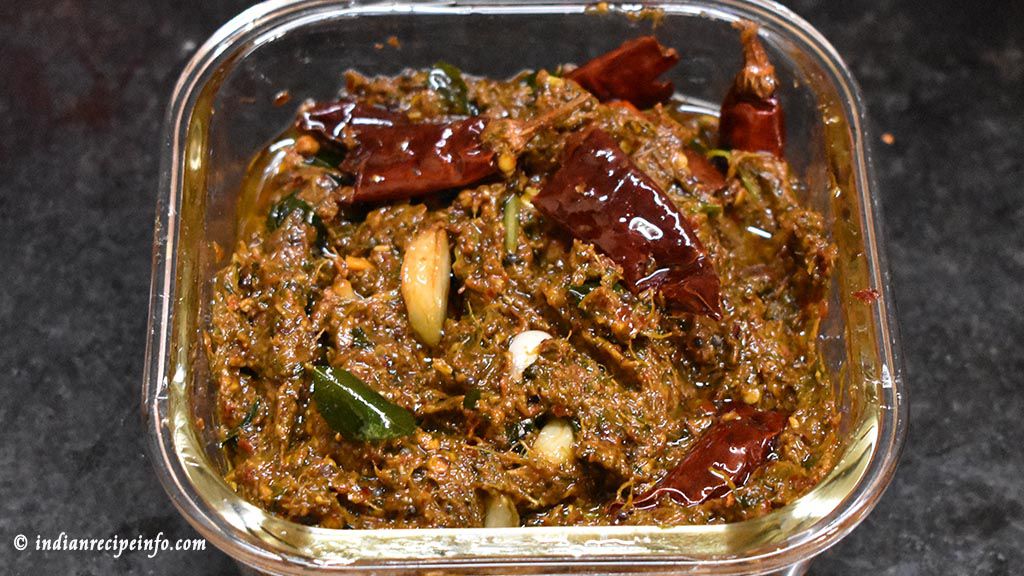
In Andhra people love to eat Biryani recipe with pickles so I recommend you to try this pickle along with it and I am sure that you will love to eat biryani always with this pickle.
I have already posted a coriander pickle but that version lasts for a few weeks but this pickle can be stored for 2-3 months at room temperature and 3+ months when refrigerated without any preservatives. The word “Niluva” means long-lasting.
We can plant coriander plants in our backyard and they are easily grown. Even if you don’t have enough place we can cultivate them using vertical farming and it takes 80-90 days. Making this pickle with fresh leaves gives a good taste.
Tips to make perfect Kothimeera Nilava Pachadi:
- Always use fresh leaves to make this recipe. We can even add tender stems.
- Although we take 1 bowl of leaves once they are cooked, they shrink to look small quantity.
- Cook tamarind pulp to get thick paste so that the pickle doesn’t get spoiled.
- Add adequate oil so that oil oozes out once the pickle is stored in a container.
- Store Kotimeera Pachadi in an airtight container so that it tastes great even after 3 months.
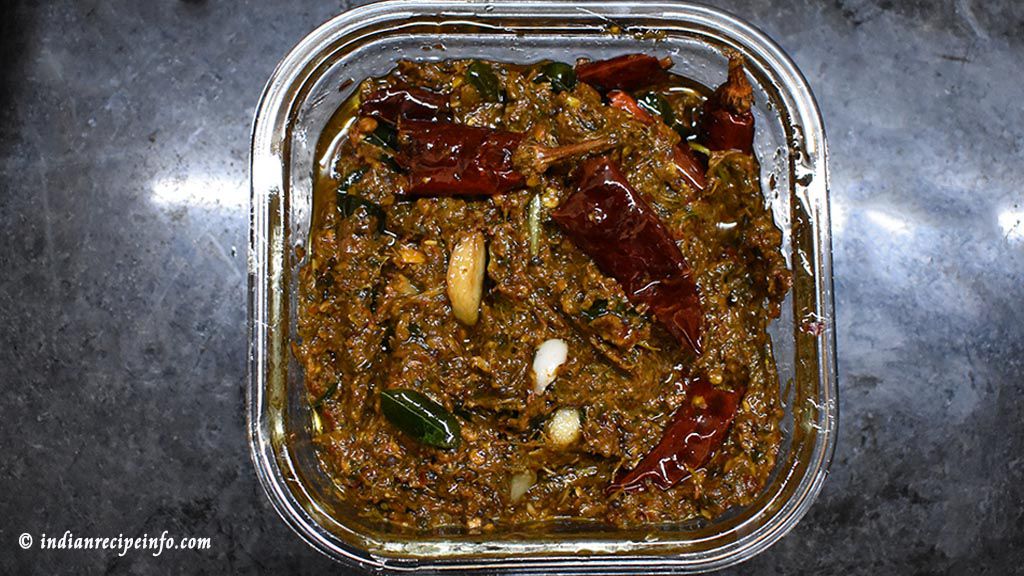
You may also like to check other recipes:
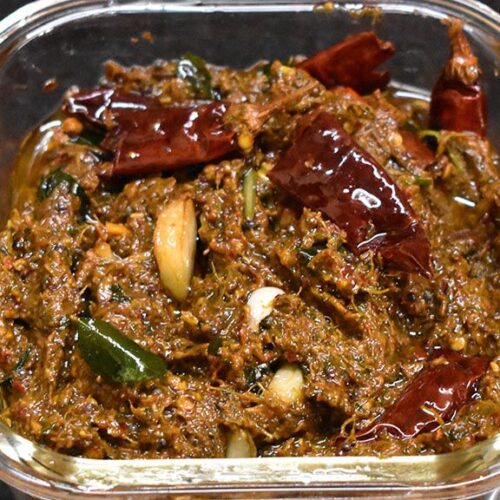
Kothimeera Nilava Pachadi Andhra Style
Kothimeera Nilava Pachadi Andhra Style is one of the nutritional, spicy and tangy pickle recipes which can be served with breakfast recipes and also with steamed rice.
Ingredients
- Coriander leaves – 1 bowl
- Oil – 7 tbsp.
- Dry Red chillies – 1 cup
- Mustard seeds – 1 tbsp.
- Fenugreek seeds – 1 tbsp.
- Jeera/ cumin seeds – 1 tbsp.
- Water – 1 cup
- Tamarind – fist full
- Garlic cloves – 4 tbsp.
- Salt – 1 ½ tbsp.
- Chana dal – 1 tbsp.
- Urad dal – 1 tbsp.
- Mustard seeds – ½ tbsp.
- Curry leaves – 2 tbsp.
- Hing/ asafoetida – a pinch
Instructions
- Put little oil in a kadai and fry for a while and remove from oil. Put them on a plate and let them cool.
- Put fresh coriander leaves in remaining oil and fry till they are cooked. Transfer to another plate.
- Dry roast mustard seeds, cumin seeds and fenugreek seeds on low flame. Remove and cool.
- Put a cup of water and fist full tamarind in the same kadai and let tamarind turn into a thick paste and let cool.
- Add roasted spices and garlic cloves in a mixer grinder and grind for one round.
- Once they turn coarsely, add tamarind pulp, coriander leaves and salt.
- Grind to a soft paste and transfer to another bowl. Keep aside.
- Add little oil in a pan and put mustard seeds, chana dal, urad dal, dry red chillies, garlic cloves, a pinch of asafoetida and curry leaves.
- Off the flame and let oil and temper spices get cooled. Put this temper over kothimeera nilava pachadi Andhra style and mix well.
Recipe Video
How to make kothimeera nilava pachadi Andhra style:
1. Heat 2 tbsp. oil in a kadai and put dry red chillies. Fry for a while and transfer to another plate.
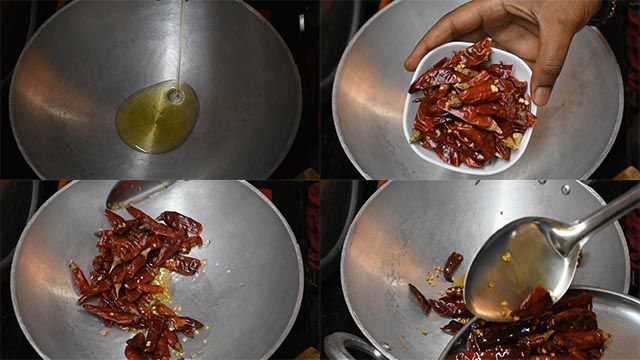
2. In remaining oil put cleaned and plucked coriander leaves and fry for a while till they shrink and get cooked. Transfer to another plate and let it cool.
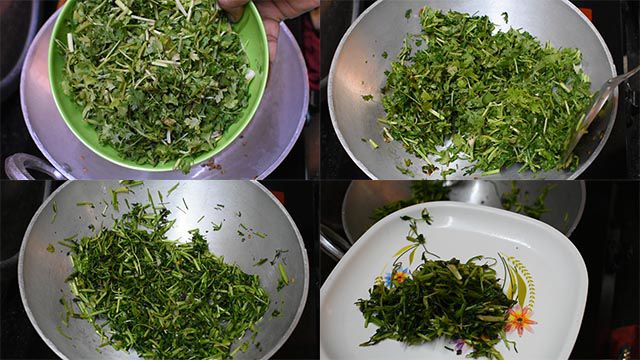
3. Add mustard seeds, fenugreek seeds and cumin seeds and dry roast for a while. Transfer to plate and let them cool.
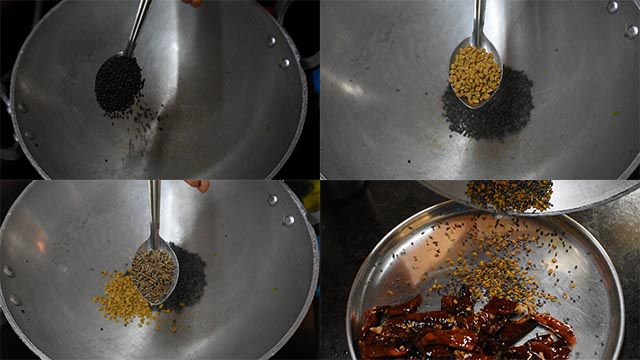
4. In a kadai, add a cup of water and add tamarind. Boil tamarind pulp to make a thick paste.
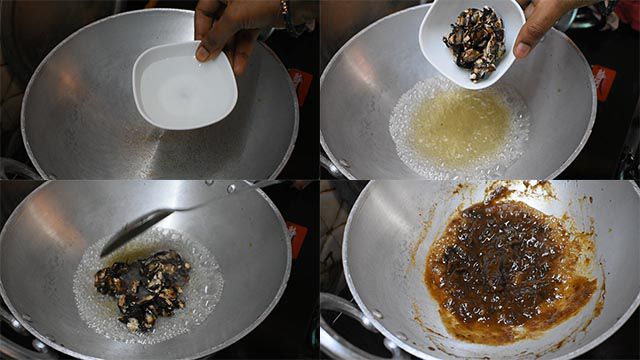
5. Put dry red chillies and other spices in a mixer grinder and add 2 tbsp. garlic cloves. Grind coarsely.
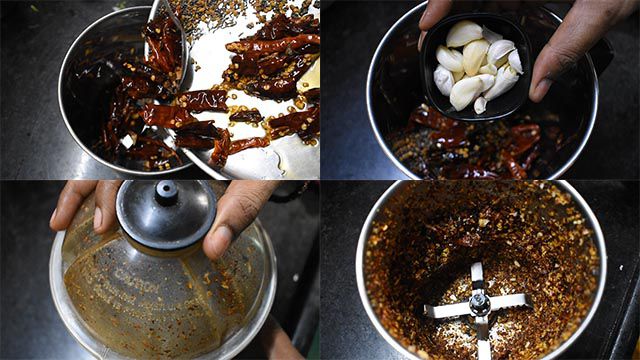
6. Add tamarind pulp, coriander leaves and salt as per your taste and grind to a soft paste.
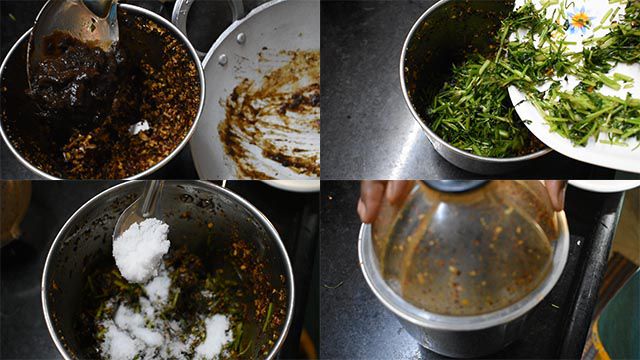
7. Transfer kotmir niluva pachadi to another bowl and keep aside.
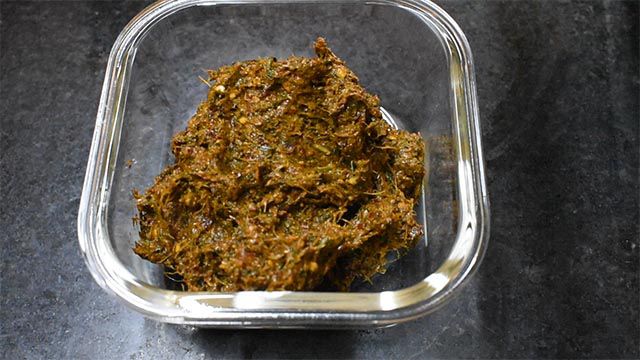
8. Heat 5 tbsp. oil in a pan, add chana dal, urad dal and mustard seeds.
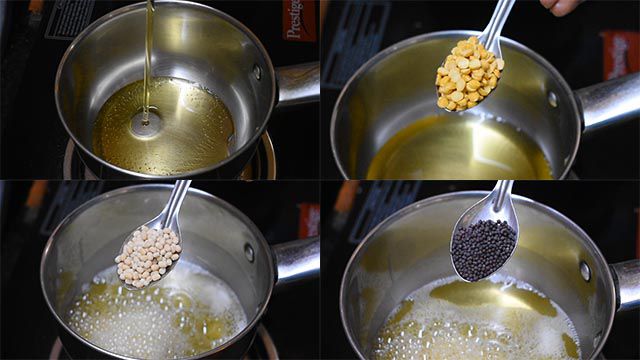
9. Add 2 tbsp. garlic cloves, 3 No. dry red chillies (adjust as per your spiciness), curry leaves and a pinch of asafoetida.
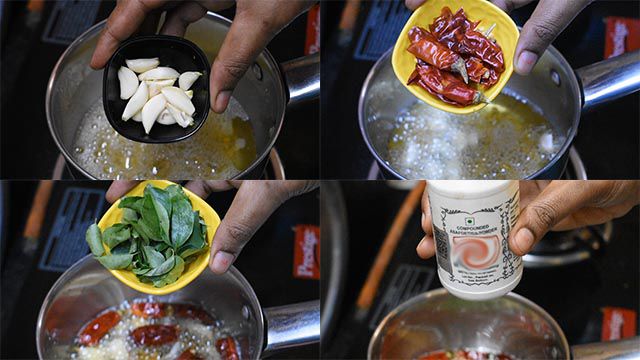
10. Let oil and temper spices get cooled and pour over kothimeera nilava pachadi Andhra style and store in dry and airtight container.
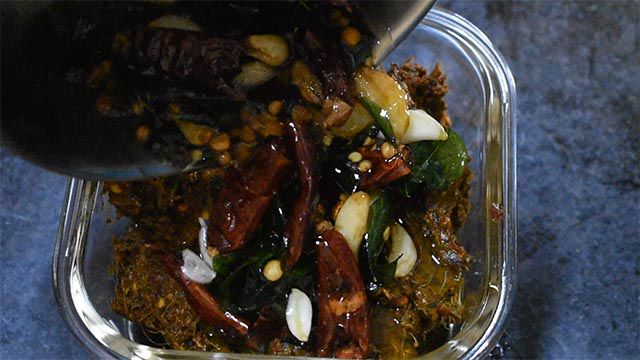

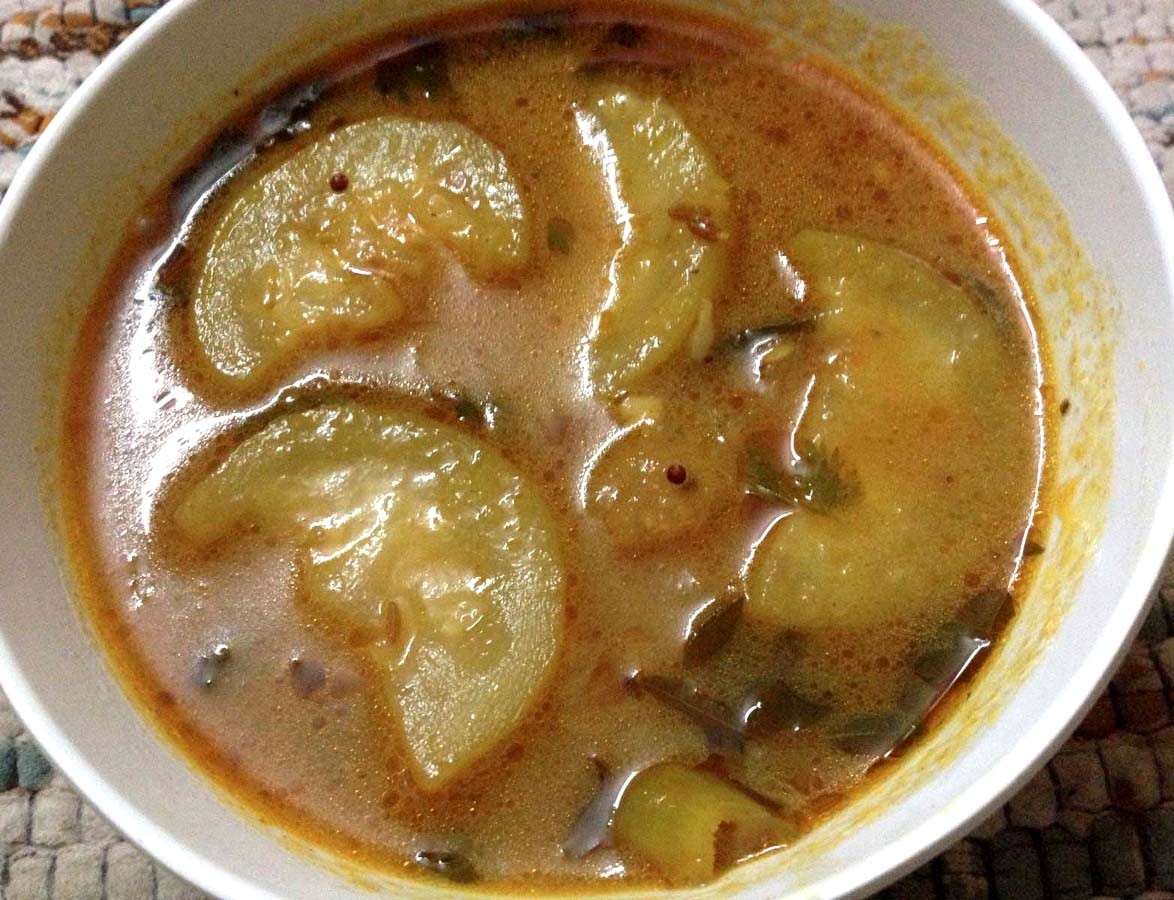




2 Comments